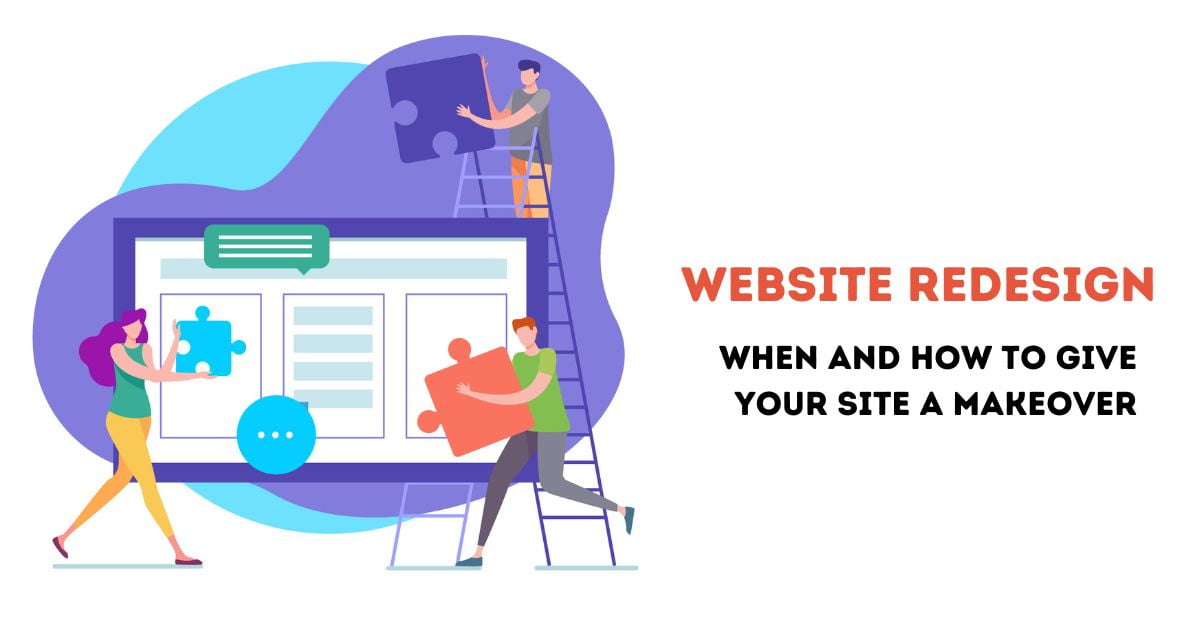Essential Tips for Selecting a Web Design Agency in Vadodara Finding the right web designing…

Website Redesign: When and How to Give Your Site a Makeover
Table of Contents
hide
A website redesign can breathe new life into your online presence and enhance user experience. Knowing when and how to give your website a makeover is crucial for maintaining a strong online presence. Consider a redesign if your site has an outdated design, poor user experience, or fails to align with your changing business goals.
Here’s a guide on when and how to give your site a makeover:
- Outdated Design: If your website’s design looks outdated or doesn’t align with current design trends, it’s time for a refresh. Keep your design modern, visually appealing, and in line with your brand identity.
- Poor User Experience: If users struggle to navigate your site, find information, or complete desired actions, a redesign can improve usability. Simplify navigation, optimize page load speed, and ensure responsive design for seamless browsing across devices.
- Changing Business Goals: As your business evolves, your website should reflect your current objectives. A redesign allows you to align your site with new goals, incorporate updated messaging, and showcase new products or services.
- Mobile Responsiveness: With mobile usage on the rise, having a mobile-friendly website is crucial. If your current site is not optimized for mobile devices, consider a redesign to provide a seamless experience across screens.
- Poor Conversion Rates: If your site struggles to convert visitors into customers or leads, a redesign can address usability issues and implement conversion-focused elements. Optimize call-to-action buttons, streamline the checkout process, and create persuasive landing pages.
- Brand Refresh: If you’ve recently undergone a rebranding or brand identity update, it’s essential to reflect those changes on your website. A redesign ensures consistency in branding, including updated logos, colors, and messaging.
- Competitive Advantage: If your competitors have more visually appealing and user-friendly websites, it’s time to level up. A redesign can help you stay ahead by incorporating innovative features, intuitive navigation, and compelling visuals.
- Incorporating New Technologies: A website redesign provides an opportunity to integrate new technologies and features that enhance functionality and user experience. Consider incorporating chatbots, personalization, or interactive elements to engage visitors.
- SEO Enhancement: A redesign allows you to optimize your site for search engines. Implement best practices such as improving site structure, enhancing page loading speed, optimizing meta tags, and ensuring mobile-friendliness.
- Analyze and Plan: Before starting a redesign, analyze your current website’s performance, user behavior, and conversion rates. Set clear goals, develop a comprehensive plan, and work with a professional web design team to ensure a smooth and successful redesign.
Conclusion:
website redesign is not just about aesthetics but also about improving functionality, user experience, and achieving your business objectives. By assessing the right indicators and implementing a well-planned redesign, you can create a visually appealing and highly effective website that drives engagement and supports your overall business growth.
Explore our Services!
Website Development Company in Vadodara, Digital Marketing Company in Vadodara, SEO Company in Vadodara, Google Ads Expert in Vadodara, Hire the Best Facebook Ads Specialist in Vadodara, E-Commerce Development Company in Vadodara, UI/UX Design & Development Service in Vadodara, Web Application Development Services in Vadodara, Mobile Application Development Services, Social Media Marketing Agency in Vadodara, Best Email Marketing Services in Vadodara


